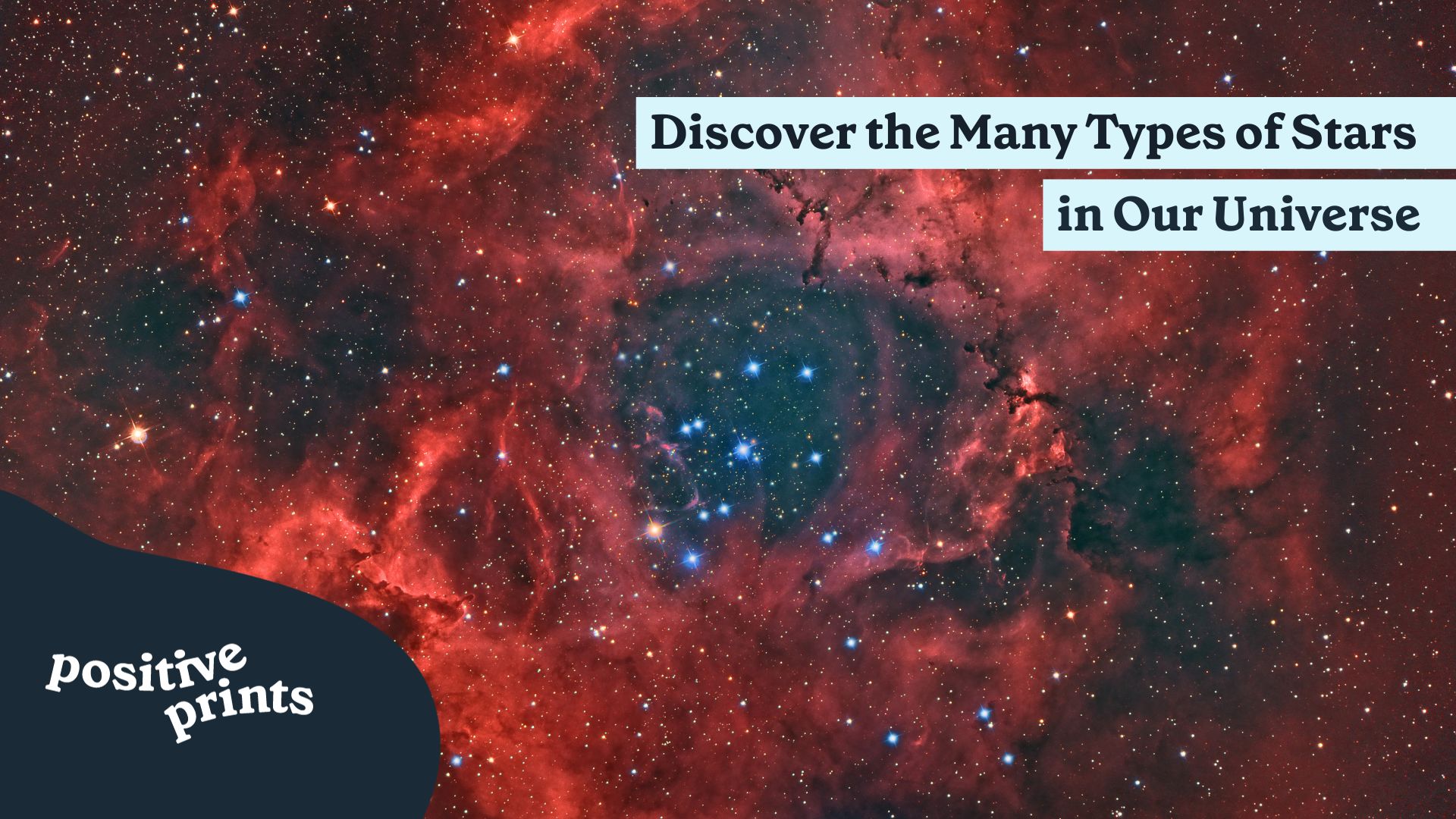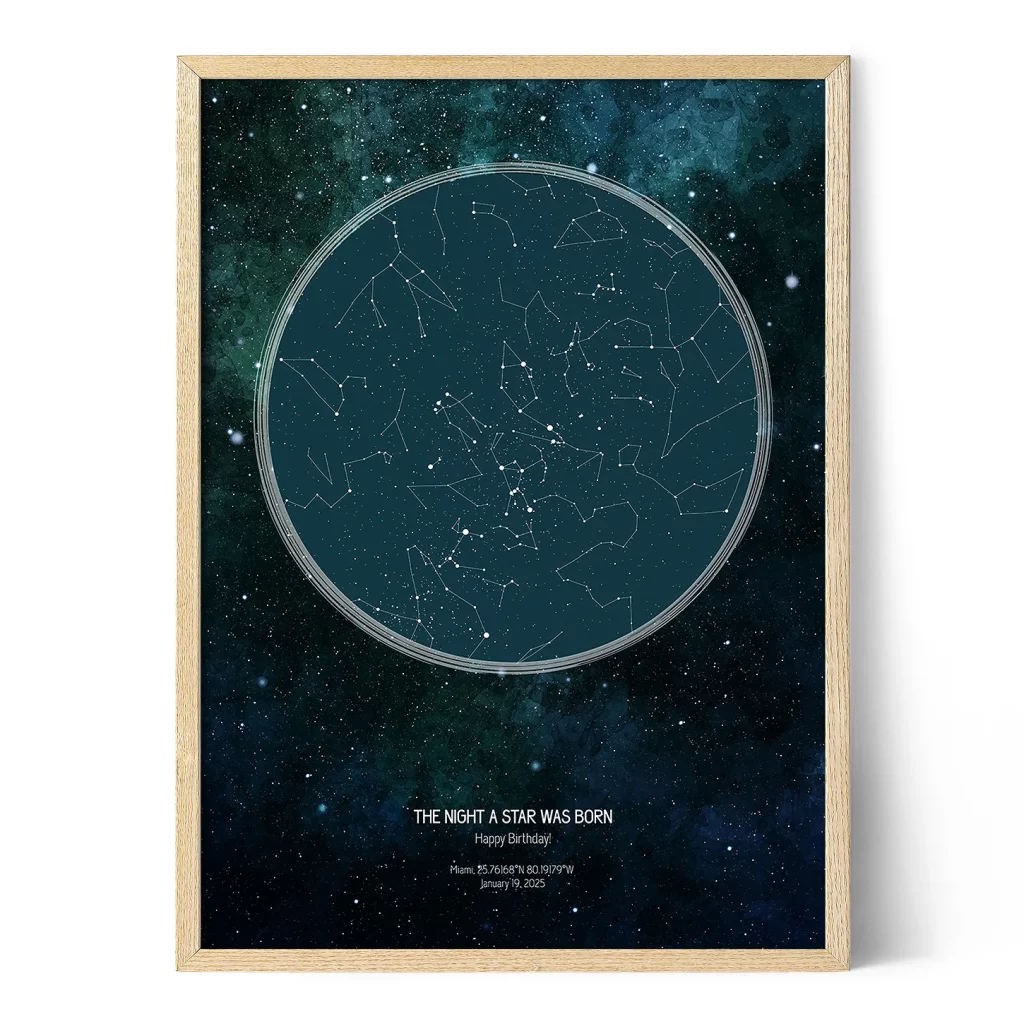
Stars hold a special place in the expanse of the universe. They not only light up the darkness of space but also captivate our imaginations and spark our curiosity. Stars are not just decorations in the sky, they play a significant role in forming galaxies, driving the universe forward, and providing us with the very elements that make up our existence.
Today we embark on an expedition to unravel the mysteries surrounding these radiant luminaries. Join us as we embark on a journey to “Discover the Many Types of Stars in Our Universe”. Beyond the shimmering dots that adorn our night sky lies a multitude of variations, each with its intriguing story and unique contribution to the cosmic spectacle.
In this captivating exploration, we will delve into the essence of diversity. From the awe-inspiring brilliance of main sequence stars to the abysses of holes, we will uncover the enthralling realm of stars, shedding light on their distinct characteristics and their profound impact on shaping our universe.
So let your curiosity be your guiding star as we venture through space itself, striving to comprehend and appreciate all the different types of stars that grace our universe.
Get ready for a journey through the cosmos, where we’ll reveal the captivating marvels of the universe that have fascinated people for thousands of years.

What Are Stars?
At the core of our exploration of the universe lies a question: what are stars? These celestial objects can be thought of as spheres of burning gas, primarily made up of hydrogen and helium. Their immense size and the energy they emit make them truly captivating entities in the vastness of space. Delving into the fascinating realm of astronomy, uncovering facts about stars becomes a fun idea, sparking the joy of discovering more about these cosmic wonders on your own.
Stars are far from static; they are evolving entities with life cycles that span millions to billions of years. Their journey begins within the depths of nurseries, where clouds composed of gas and dust come together under the unyielding pull of gravity. These youthful stars ignite when their internal temperatures and pressures reach a point where nuclear fusion can take place. This fusion process mainly involves converting hydrogen into helium, releasing an immense amount of energy in the form of light and heat that we perceive as starlight.
Throughout their lifespan, stars maintain a delicate equilibrium between the gravitational force attempting to collapse them and the outward force generated by nuclear fusion, which strives to expand and break free. The interplay between these forces governs a star’s dimensions, temperature, luminosity, and eventual destiny.
The exploration of stars has granted us not only a comprehension of how the universe operates but also a deep admiration for the stunning and intricate nature of the cosmos. As we continue our journey into our exploration, we will unveil the categories of different stars that exist, each possessing its distinct features and significance in the cosmic theater.
The Main Types of Stars
As we delve further into the expanse of the universe, it becomes clear that stars are not all alike. They come in variations, each with its unique characteristics and behaviors. To truly appreciate the diversity of stars in our cosmos, let’s take a look at the primary classifications that define them.

Main Sequence Stars:
Main sequence stars play an important role in the universe as they make up the majority of stars we see. Similar to our Sun, these stars are currently in their prime, where gravity’s pull inward is perfectly counterbalanced by the pressure created through nuclear fusion. This delicate balance allows them to emit a glow for billions of years. Their dimensions and temperatures can differ, resulting in classifications within the sequence, ranging from smaller and cooler red dwarfs to larger and hotter stars like blue giants.
Red Giants and Supergiants:
As the main sequence, stars get older and run out of hydrogen fuel, they go through changes. Red giants and supergiants are formed when these stars expand in size and emit a glow. These enormous stars are often hundreds of times bigger than our Sun and their eventual destinies can be quite spectacular with some ending in supernova events.
White Dwarfs:
When stars similar to our Sun come to the end of their lifespan, they shed their layers leaving behind dense remnants called white dwarfs. These remnants are incredibly hot and gradually cool down over billions of years. The exploration of dwarfs has offered knowledge about the advanced phases of star development.
Neutron Stars:
After a supernova explosion, some stars undergo collapse and transform into neutron stars. These celestial bodies are incredibly dense to the point where just a teaspoonful of their substance could weigh as much as a mountain. Neutron stars offer an opportunity for scientists to investigate extreme conditions and how matter behaves when subjected to intense pressure in the vast cosmos.
Black Holes:
At the very end of stellar evolution lies the mysterious black hole. These gravitational behemoths are born from the collapse of stars beyond a critical point. Black holes are known for their gravitational force so powerful that even light cannot escape their grasp. They continue to puzzle us as we strive to comprehend some of the universe’s mysterious phenomena.
Throughout our voyage across the cosmos, we will delve deeper into the characteristics, formation process, and significance of each type of these celestial bodies. Come along as we untangle the fabric, examining one star at a time and uncovering the impact these luminous entities have on our vast universe.
Factors Influencing Star Types
The universe is like a canvas and the stars, that fill its expanse, come in a variety of different types like the colors on an artist’s palette. However, what exactly determines the features and actions of these stars? Let’s explore the factors that shape how we classify them.

Stellar Mass:
The size of a star plays a pivotal role in determining its classification. It is a truth of the cosmos that guides the journey of a star’s life. The mass of a star influences the pressure and temperature at its core, which ultimately determines the nature of nuclear reactions taking place. Smaller stars, like dwarfs, are cooler and less massive, while larger stars, such as giants, are hotter and more massive.
1. Low Mass Stars: Stars with mass, such as red dwarfs, have longer lifespans. Their fusion processes occur at a pace that allows them to efficiently consume their hydrogen fuel.
2. High Mass Stars: On the contrary, massive stars have shorter lifespans and burn much brighter and hotter. This leads to captivating stages in their evolution; like becoming giants or undergoing supernova explosions.
Chemical Composition:
Like a chef uses ingredients to create a variety of diverse dishes, stars are shaped by their chemical makeup. While hydrogen and helium make up the majority of a star’s composition, there are also trace amounts of other elements present. The proportion of these elements can have an impact on the star’s color, temperature and brightness.
1. Metallicity: Astronomers use the term “metals” to refer to elements other than hydrogen and helium. Stars with metallicity have more of these elements, which can affect their appearance and behavior. For example, stars with a higher metal content often appear bluer and have shorter lifespans compared to those with lower metal content.
2. Helium Abundance: The amount of helium in a star also plays a role in its characteristics. Stars rich in helium, sometimes called helium stars, exhibit unique features and behaviors due to their high levels of helium.
By understanding these factors astronomers can categorize stars into different types and make predictions about their evolutionary paths. Stellar mass and chemical composition act as guiding forces that shape the destiny of each star in the cosmic theater, making them unique participants in the grand narrative of the universe.

Uncommon and Exotic Stars
Although most of the stars in the universe are sequence stars, giants, and white dwarfs, there are still some fascinating and rare stellar inhabitants that deserve our attention. In this section, we will shed light on some of these less common stars that add richness to the celestial landscape.
Variable Stars
Variable stars are like shapeshifters with their brightness shifting and changing over time. They provide insights into the physics of stars, allowing astronomers to determine distances and study the processes happening within them. Variable stars come in various types, including
1. Cepheid Variables: These stars pulsate rhythmically, with their brightness changing predictably. The periods of their pulsations are directly connected to their luminosity, making them useful for measuring distances in the universe.
2. RR Lyrae Variables: Similar to Cepheids, RR Lyrae stars serve as indicators of distance within our galaxy and nearby galaxies.

Protostars and Failed Stars
In the dark corners of space, stellar birth and non-birth can be equally intriguing.
Protostars: These stellar nurseries serve as the birthplaces for stars. They are in their early stages, still accumulating matter from the surrounding clouds of dust and gas. By observing protostars we gain insights into the phases of star formation.
Brown Dwarfs: Often referred to as “failed stars”, due to their lack of mass to ignite nuclear fusion within their cores, brown dwarfs occupy a unique position in the cosmos. They bridge the gap between planets and true stars, showcasing the range of celestial objects.
As we delve deeper into understanding these rare stars, we uncover hidden aspects of our universe. Variable stars guide us across distances, protostars reveal the mysteries behind stellar birth and brown dwarfs challenge our conventional definitions of what constitutes a star. Together they contribute to the awe-inspiring complexity and breathtaking beauty that characterizes our cosmos, encouraging us to continue our journey of exploration.

Stars and the Unending Journey of Discovery
In our celestial journey to ‘Discover the Many Types of Stars in Our Universe,’ we navigate the cosmos with the aid of a star map, a celestial guide revealing the intricacies of these cosmic luminaries. Stars, those beacons that adorn the night sky and bear names that mean star, have become our guiding lights in unraveling the enigmas of the cosmos.
From the magnificent main sequence stars, steadfastly illuminating galaxies, to the immense red giants and supergiants that shape the universe, and even to the mysterious white dwarfs, neutron stars, and black holes – each type of star contributes its distinctive chapter to the cosmic tale, as outlined in our stellar star map.
Through our discoveries, we’ve discerned that stellar mass and chemical composition are crucial factors that determine a star’s destiny; whether it will shine brilliantly for ages or meet an end in a magnificent display. These elements intricately weave a narrative of our ever-evolving universe, as indicated by the names that mean star, etched on our star map.
As we shift our focus towards explored realms like stars, protostars, and brown dwarfs – we begin to truly appreciate the subtleties and unexpected wonders concealed within deep space, guided by the coordinates on our star map. Variable stars unveil distances, protostars reveal insights into celestial body origins, while brown dwarfs blur the lines between stars and planets.
In our search for knowledge about the universe, we have not only discovered the incredible complexity of stars but also witnessed the unwavering curiosity that resides within us, driven by the names that mean star and the intriguing details on our star map. Exploring and studying stars is a testament to our thirst to understand the vastness of the cosmos, unravel its enigmas, and find our place within its magnificent design.
As we conclude our celestial voyage, may the awe and wonder sparked by stars, marked on our star map, continue to propel us in our relentless pursuit to unveil the secrets of the universe. The universe, with its array of stars and countless cosmic marvels, eagerly awaits our exploration, urging us to aim high and delve into mysteries that lie beyond the plotted course on our star map.











